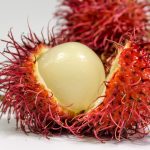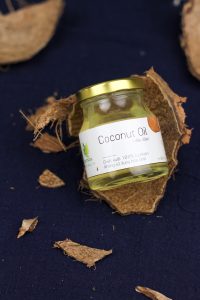
Split hair is the splitting of hair tips into multiple strands. It is usually a sign of unhealthy hair that required treatment or nutrition. Split ends are mainly caused due to dry hair, excessive hair treatments, physical stress, lack of nutrients, etc. Split hair can often lead to tangled hair making it difficult to maintain and may often lead to a messy look. In this post, we will go through some of the main causes of split ends. Hair is composed of three main layers, i.e. cuticle, cortex, and medulla. The cuticle is the outmost layer which is formed by transparent dead cells and protects the inner layers. The middle layer (cortex) is what gives the natural colour of your hair. It has pigments that render colour to your hair. It is composed of keratin and fatty acids. The middle layer is also elastic. Finally, the core layer (medulla) is somewhat similar to the cortex, composed of pigments, fatty acids and keratin. The outmost layer is one of the essential parts since it provides a protective function. Loss of the cuticle can be one of the main reasons for split ends.
1. Chemical damage
Hair beautification products release several chemicals, all of which can be harmful to the hair if used excessively. The relaxants used for hair straightening or curling hair must first break the natural disulfide bond. These natural chemical bonds are required for the strength of the hair. The dyes and colouring agents penetrate the middle and inner layers to render colour to your hair. This can cause damage to the outer protective layer of your hair.
2. Dry hair
There are many reasons for dry hair ranging from excessive sun exposure to heating devices for hair beautification. Try to apply hair moistures to avoid dry hair.
3. Over-washing
It is not recommended to wash your hair daily. Alternate day washing is more than enough for clean hair. Also, while bathing with warm water can benefit the body and immunity, it can leave the hair too dry.
4. Chlorine and salt
After a swim in the pool or marine water, the chlorine or salt can be damaging to your hair.
5. Heat
Several health care products often work by the release of heat. For instance, heat is the main component of hair straightening rods. Similarly, a hairdryer, if not used with care, can cause excessive heating of your hair. The excess heat can cause dehydration of your hair, which would make it brittle and prone to split ends.
6. Physical damage
Physical damage is mainly contributed to excessive combing. This applies to both dry and wet hair. Although damp hair is more stretch (up to 30%), excessive combing can overstretch your hair and lead to hair breakage. In the same way, excessive combing can cause friction, which leads to losing the outer hair layer.
7. Ultraviolet damage
UV damage is due to the exposure of your hair to the sun. The sun rays contain UV, which can damage your skin as well as your hair. It causes loss in pigmentation (hypopigmentation, i.e. make the hair lighter in colour) and break protein and keratin bonds. These bonds are needed for the strength of your hair. Without these, your hair gets brittle, weak, lose its texture, and is dry.
8. Nutritional Damage
Balance of nutrition is essential for maintaining the health of your hair. There are about 100 thousand hair strands on average. Ang grows about 0.35 mm per day. The process requires nutrients and vitamins. Although several nutrients are needed, the most important ones would be proteins, zinc and iron.
9. Genetic Causes – Trichorrhexis
Although the genetic causes are rare, it’s not impossible. One has to take utmost care of hair if genetic is the cause of split ends. The most common genetic cause is the Trichorrhexis nodosa. It is an autosomal dominant disorder with a mutation in the SPINK5 gene that causes breakage of hair. It is also also known as bamboo hair because it leaves knots like bamboo stalks.
10. Genetic Causes – Trichothiodystrophy
Trichothiodystrophy is rarer compared to Trichorrhexis. Trichothiodystrophy is an autosomal recessive disorder. It is manifested in the body tissues as well. It is characterized by brittle hair due to sulfur deficiency in the hair. Sure is a critical ingredient that maintains hair strength.







